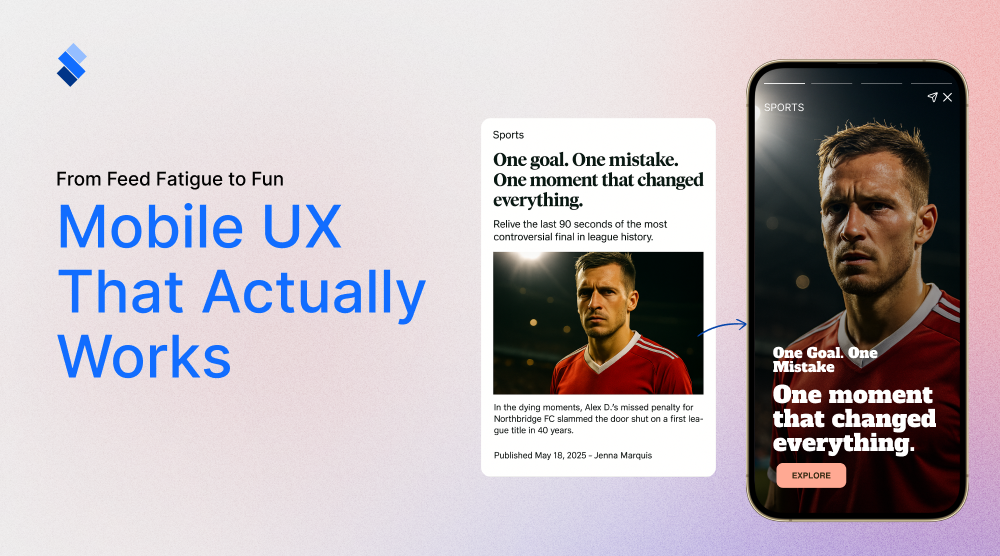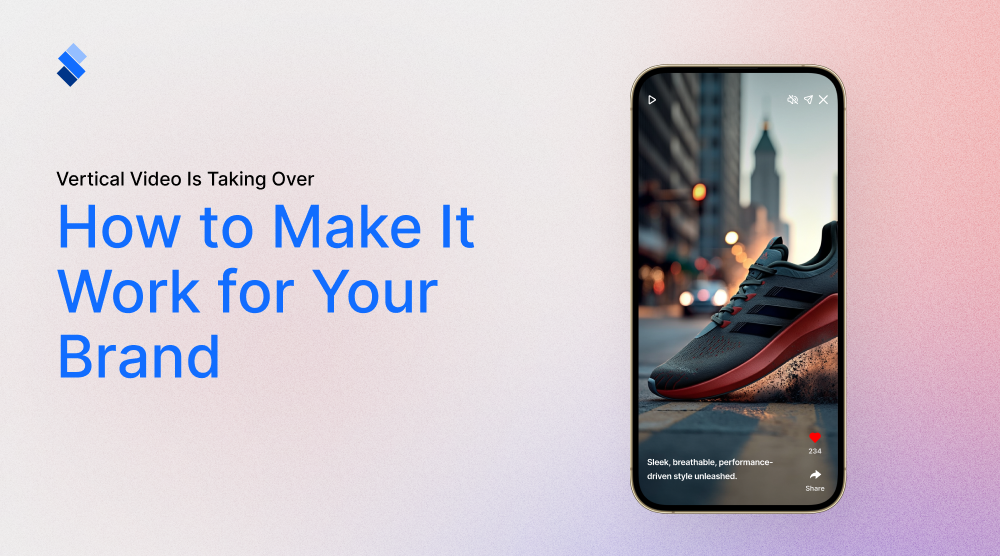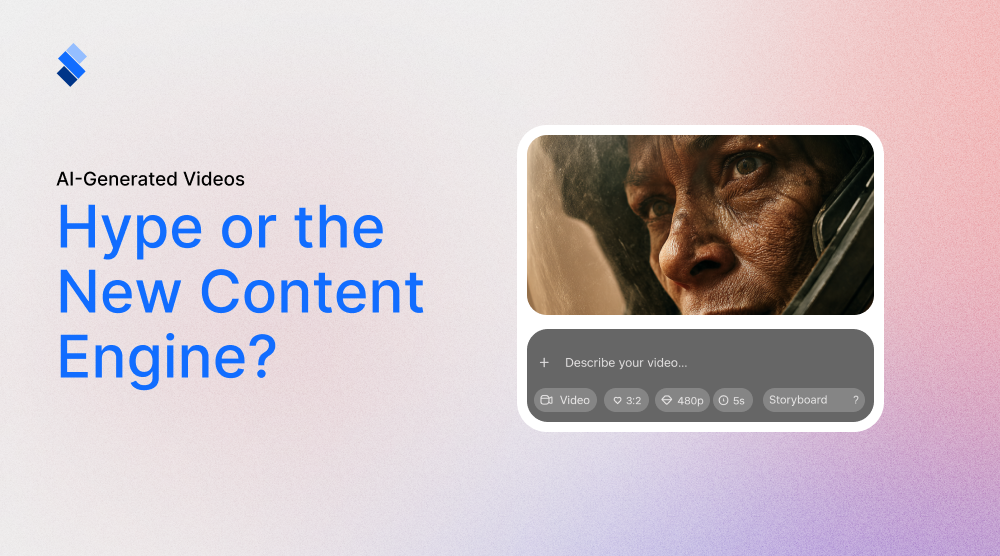Top 5 AI platforms for generating visual content
Here we will outline the top AI platforms for generating visual content and give you an idea of how to use them for web stories.

One of the most exciting technological developments is the ongoing advancement of AI software. In almost every online job we can see the impact of tools like chatGPT, Jasper, or Reply.io. So, to help you get better acquainted with this new world of online content and enable you to create top-notch web stories, we will outline the five best AI platforms for generating visual content.
Our pick of the top 5 AI platforms for generating visual content
For the purposes of this article, we will limit ourselves to tools that will aid you with creating visual content suitable for web stories. Keep in mind that there are other, quite potent tools that can help you create and design visual content. But, we feel that those are better suited for other purposes. As of writing this article, there is no AI tool that can create web stories for scratch suitable for commercial use. You still need to learn what web stories and like, and how to design them. So, we will focus on those that are fairly easy to master, and that can aid you greatly when creating visual content.
Canva
Let's start off with an overall terrific tool, Canva. Aside from having numerous customization options and ample design elements, Canva incorporates some AI-powered features to enhance its design capabilities and user experience. While designers primarily use it for standard design and customization, it does utilize some AI technologies. For instance, Canva's Smart Resize feature uses AI algorithms to automatically resize designs to fit different social media platforms or other design formats. This can help you save time and effort in manually resizing designs for different web story formats. That way you can ensure that the visuals are optimized for each platform's requirements.

Another way to use Canva's AI is for Design Suggestions. Canva's design suggestion feature uses AI algorithms to analyze your previous content and provide suggestions for alternative design ideas. This way you can discover new design options or variations. And you can play around with different design ideas until you find one suitable for the web story you wish to make.
Have an image you would like to use but without its background? No problem! You can simply use Canva's background remover feature uses AI-powered image recognition technology to automatically remove the background from images. Doing so can save a lot of time in manually removing backgrounds from images and help you create clean, professional-looking visuals. Seeing that most web stories are some combination of written and visual content, we should mention Canva's Font Pairing feature. What it does is that it uses AI algorithms to suggest font pairings based on the user's selected font. This can help you choose complementary fonts that work well together and create visually harmonious designs.
Adobe Creative Cloud
One of the tried and true AI platforms for generating visual content is Adobe Creative Cloud. Seeing that it contains Photoshop, Illustrator and Premiere Pro, most professional designers are quite comfortable with using it. So, does this mean that you have to a professional designer in order to improve your web story content through it? Of course not. Especially if you are aware of the AI features that Adobe Creative Cloud brings.
The first feature is Adobe Sensei. This is an AI and ML(Machine learning) framework developed by Adobe that powers many of the intelligent features. It does so by:
- Leveraging advanced algorithms and data analysis to automate repetitive tasks
- Provide smart suggestions
- Deliver intelligent content-aware features
For example, in Adobe Photoshop, Sensei-powered features like Content-Aware Fill and Content-Aware Scale use AI algorithms to automatically analyze and manipulate images for seamless image editing. It also gives you Auto-Layout and Design Suggestions. Through these features can automatically analyze content and provide suggestions for optimized layouts, color schemes, and typography. This will enable you to create professional-looking designs with minimal effort.

You can also use the Image and Video Analysis feature of the Adobe Creative Cloud. With these features, you can automatically analyze visual elements in videos, such as faces, objects, and scenes, and provide automated tagging, tracking, and editing suggestions. As you can imagine, this can be quite helpful for personalization and social media posts. You can also use Adobe Premiere Pro's Auto Reframe feature to analyze video content and automatically reframe the video for different aspect ratios. This makes it far easier to create videos optimized for different platforms and devices.
Lastly, by using Adobe Creative Cloud you will have access to Adobe Stock. This is Adobe's extensive library of images, videos, and other creative assets. It also relies on a couple of AI features. For example, Adobe Stock uses AI algorithms to automatically generate keyword suggestions and auto-tag images based on their content. As you can imagine, this makes it far easier for users to search and discover relevant assets for their creative projects.
Runway ML
If you wish to make creating visual content even easier, we suggest that you consider Runway ML. This is an AI-powered platform that provides a range of tools for creating visual content using machine learning algorithms. It offers a user-friendly interface and a wide variety of pre-trained models. Through these models, you can create various visual content, including:
- Images.
- Videos.
- Animations.
One of the key features of Runway ML is Image Generation. Runway ML offers several image-generation models. One such model is DALL-E, which can generate images from text descriptions. Another model is StyleGAN, which can generate high-quality images with controllable styles. Once you create suitable images, you can use Runway ML's Style Transfer. Through it, you can transfer the style of one image to another. By doing so, you can create artistic compositions, apply filters, or create visual effects.
Another key feature of Runway ML is Object Detection and Segmentation. These features can identify objects in images or videos and generate masks or boundaries around them. This has various applications, such as image editing, visual effects, and even augmented reality. When the time comes to edit, you can use real-time Editing. Runway ML provides real-time editing capabilities, allowing users to see the results of their visual content generation in real time. This makes it far easier to edit and manipulate the input data or adjust the model parameters. Through real-time editing, you can enjoy interactive and iterative workflow for creative experimentation.
It is also important to mention that Runway ML uses Deep Learning Integration. What this does is that it allows you to train your own custom deep learning models using your own data. By doing so, you can create your own AI-powered visual content generation pipelines and tailor them to your specific needs.
Runway ML is available as a desktop application for Mac, Windows, and Linux. You can get a free version with limited access to some models, or a subscription-based Pro version with full access to all models and features. It's worth noting that while Runway ML provides powerful tools for generating visual content using AI, it still requires artistic creativity and judgement to create truly unique and compelling visuals. With this in mind, we would advise that you join Runway ML's community. Especially if you are interested in improving your visual design skills. There is a vibrant community of artists, designers, and developers who share their creations, insights, and workflows.
Artbreeder
Let's say that you have a full library of visual content. Reusing them for future web stories is a viable option. But, it likely won't be as effective. You can also try creating new content, but this is rarely easy. Well, another way you can approach this problem is by using Artbreeder. It is an AI-powered online platform that allows users to create new visual content by blending and remixing existing images. It uses deep learning algorithms to generate hybrid images from multiple inputs, enabling users to create original artwork by combining different visual elements.

How it functions is by allowing you to input images, and then uses a technique called "breeding". Doing so generates new images by blending the features of the selected images. You can adjust various parameters such as the amount of blending, colors, and styles to create unique visual content. This is quite helpful when it comes to A/B testing, and picking between different design options. Once you are done, you can download the resulting images and use them for web and in-app stories.
It's important to note that Artbreeder relies on existing images uploaded by users. This means that proper attribution and respect for copyright and intellectual property rights are essential when using the platform. Therefore, you shouldn't try to mimic other people's web stories, hoping that yours will be different enough to avoid copyright.
OpenAI DALL-E
Lastly, we have an AI tool that will essentially convert your ideas into visual content. OpenAI's DALL-E is a powerful AI model that can generate images from textual descriptions. It is based on the same underlying technology as OpenAI's GPT-3 language model. But instead of generating text, DALL-E generates high-quality images that are coherent and visually appealing.

DALL-E has been demonstrated to generate a wide range of images, including objects, animals, scenes, and abstract concepts, from textual prompts such as "a large wolf" or "a futuristic car flying through the air." Plenty of people have relied on DALL-E for various creative applications, including art, design, advertising, entertainment, and storytelling. However, it's important to note that DALL-E, like other AI models, has limitations. It requires a large amount of training data and computing resources, and its output is generated based on the patterns learned from the training data, which may not always be perfect or free from biases. In order to properly use DALL-E to create visual content you need to be aware of the model's capabilities and limitations.
Final thoughts
While these AI platforms for generating visual content will only become better as time goes by, there are certain factors you should keep in mind. The first is the copyright problem. While using AI tools as a way to modify your content is perfectly ok, it is still unclear who will own an image created entirely by AI. If you are hoping that AI can completely create your web stories, this is a major concern to keep in mind. Secondly, it is important to keep creativity in mind when creating web stories. We truly believe that it is possible to convey emotions, nuance, and unique perspectives through story content. And we fear that relying too heavily on AI will negate this. So, we strongly urge you to fully research and appreciate what web stories are, and only then start using AI to improve your content.







